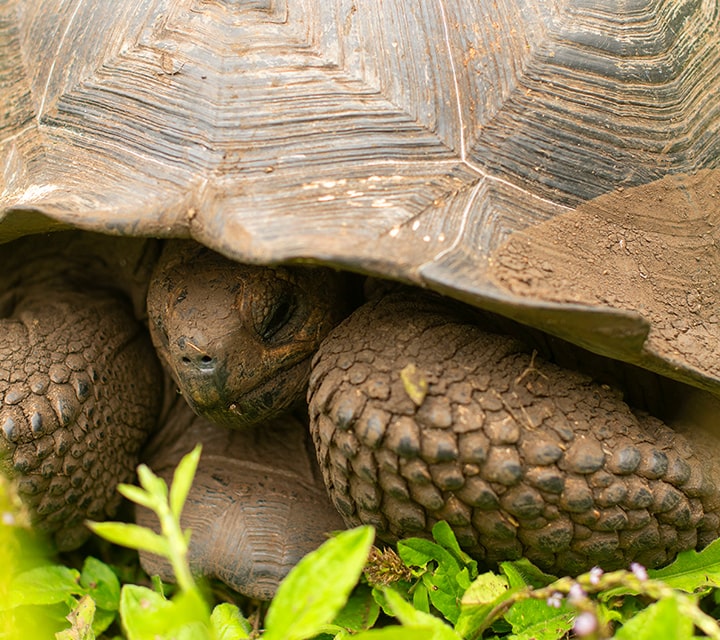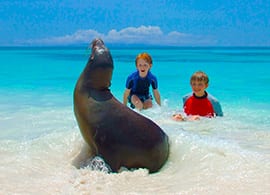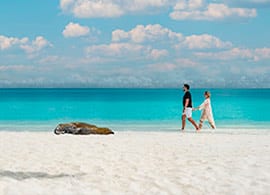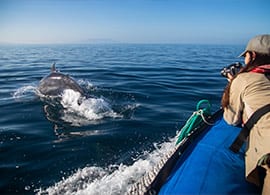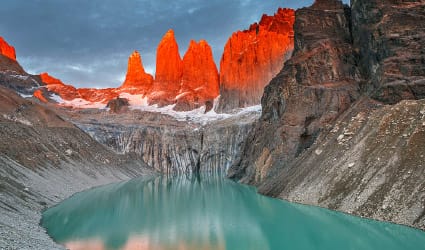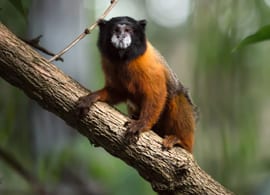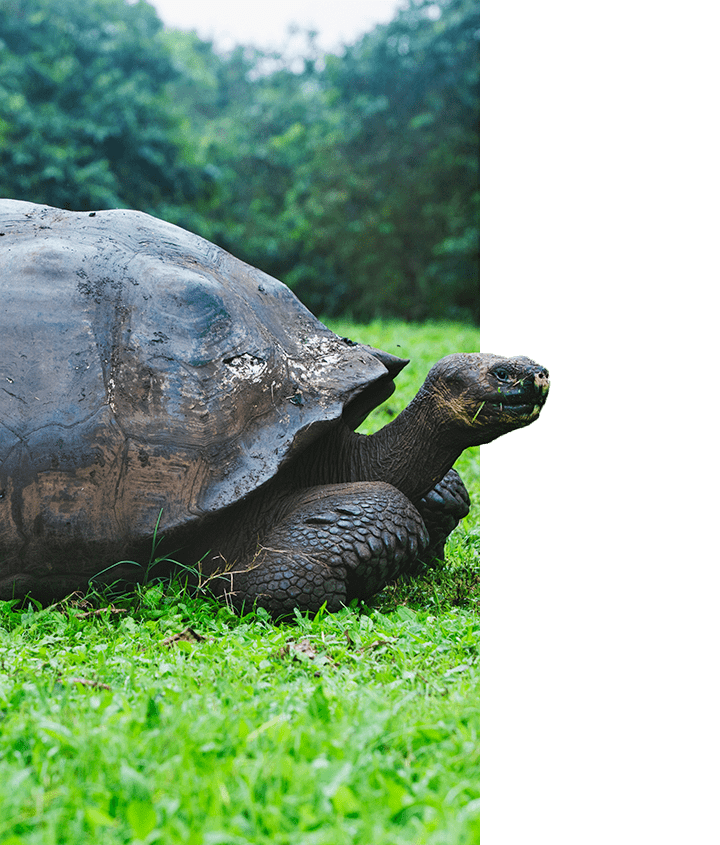
Have you ever marveled at the ancient wonders of nature? Today, we're diving deep into one such marvel — Galapagos Giant Tortoises. These behemoth creatures have a story that stretches back millions of years and is filled with fascinating twists and turns. What makes these creatures so extraordinary?
We'll explore how these tortoises made their remarkable journey from the South American mainland to the Galapagos archipelago, their unique physical attributes like shell types aiding survival in diverse habitats, as well as dive into their life cycle including unique mating rituals.
Unfortunately, it's not all sunshine as threats loom large over these magnificent creatures. We will take a look at the conservation efforts aiming to protect them from extinction. You might be wondering why they can live for over a century. Well, hold onto your seats because we've got some interesting facts lined up about their incredible longevity too!
JUMP TO SECTIONS:
- The Remarkable Journey of Galapagos Giant Tortoises
- Understanding the Physical Attributes of Galapagos Giant Tortoises
- Life Cycle and Reproduction Patterns of Galapagos Giant Tortoises
- Threats and Conservation Efforts for Galapagos Giant Tortoises
- The Incredible Longevity of Galapagos Giant Tortoises
- FAQs in Relation to Galapagos Giant Tortoises: 6 Fascinating Facts of These Ancient Wanderers
- Conclusion
The Remarkable Journey of Galapagos Giant Tortoises
Picture this: giant tortoises, as ancient and weathered as the islands they call home, migrating from the South American mainland to the secluded Galapagos Islands 600 miles off the Ecuadorian coast. This journey wasn't a short trip, it took place some 2-3 million years ago. But how did these Galapagos giants make such an epic voyage?
The Role of Charles Darwin in Unveiling their Mystery
Enter Charles Darwin, whose keen observations during his travels shed light on these intriguing creatures. He noticed differences among the tortoise populations on each island. It was clear that something had sparked unique adaptations in every species.
In fact, there are 13 living species of Galapagos Giant Tortoises today—all uniquely adapted to their specific environments. From Fernandina Island's domed shell dwellers to Pinta Island's now-extinct saddle-backed kin (we miss you Lonesome George), each variety tells a tale of survival and adaptation.
This array is more than just fascinating biodiversity. It provides valuable insights into natural selection at work—a key element that informed Darwin’s theory of evolution.
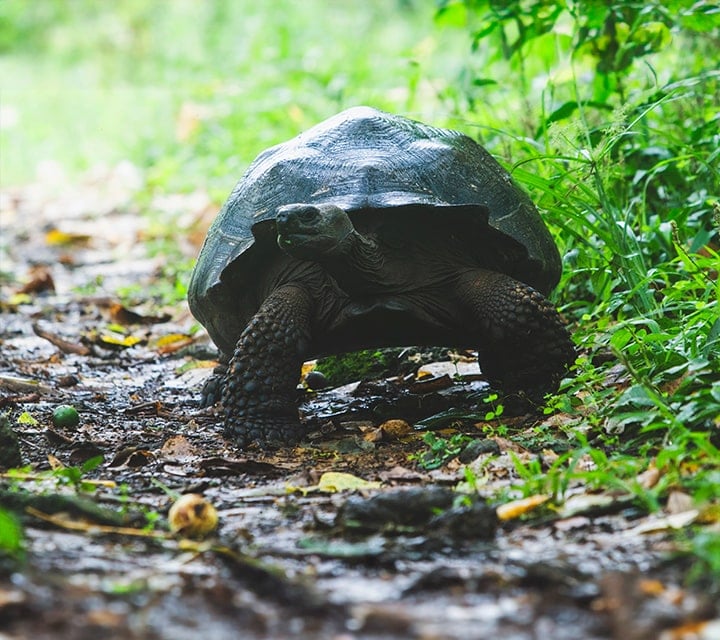
Making Their Way Across Oceans
Tortoise migration across vast oceans may sound like science fiction, but consider their built-in flotation devices—large air chambers within their shells. These buoyant beings were likely carried by ocean currents from mainland South America all the way out here where they established new homes.
This “island hopping” lifestyle allowed them to spread throughout the archipelago. They're found everywhere—from arid lowlands (hello Española Island) up through the humid highlands—showing off their adaptability.
So, next time you spot a Galapagos giant tortoise meandering along on Santa Cruz or one of the babies taking their first steps at a breeding center, remember the epic journey of survival and adaptation they represent. It's an incredible testament to nature’s tenacity and wonder.
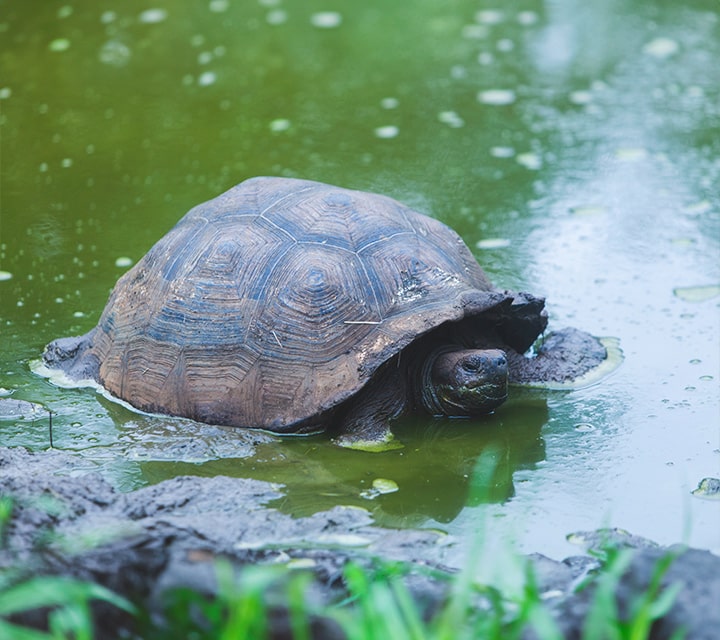
Key Takeaway:
Every sighting of a Galapagos tortoise is like taking a step back in time, witnessing firsthand the fascinating journey these resilient creatures have undertaken over millions of years. Their unique adaptations tell tales of evolution and survival that continue to captivate us today.
Understanding the Physical Attributes of Galapagos Giant Tortoises
The physical attributes of Galapagos giant tortoises are truly fascinating. These massive tortoises can reach up to five feet in length and weigh over 500 pounds, making them some of the largest tortoises on Earth.
The Significance of Shell Types
Different shell shapes play a vital role in their survival across diverse habitats. For instance, domed tortoises possess large, rounded shells that help them navigate the dense vegetation in the humid highlands.
Saddle-backed tortoises have a different approach to survival. Their raised front opening allows them to stretch their necks higher for food—an adaptation perfect for drier environments where they often live.
Beneath these colossal shells lie small air chambers which provide buoyancy when swimming or wading through water bodies. Who knew these giants were such good swimmers?!
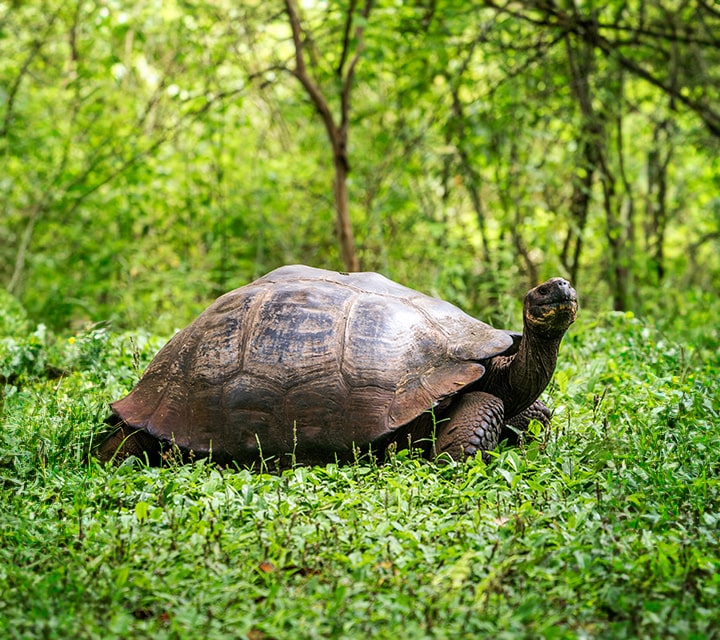
Giant by Nature: Size Matters Here
Despite being among the world's largest species of land turtles, Galapagos giant tortoises move at quite a slow pace due to their massive bulk and low metabolic rate. It's yet another unique characteristic that contributes to their charm.
This slow metabolism helps reduce energy requirements allowing them to survive without food or water for up to a year. Now isn't that remarkable?
Ancient Wanderers from South America
An interesting fact about these gentle giants is that they originated from South America around 2-3 million years ago before migrating into this archipelago we now call home—making every encounter with them feel like stepping back in time.
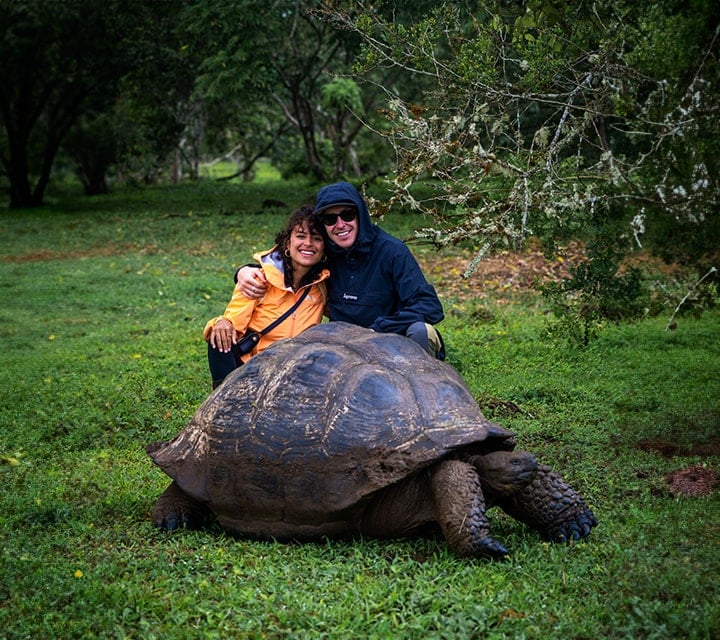
They truly are the ancient wanderers of our planet, embodying resilience and endurance. So, next time you see a Galapagos giant tortoise, remember there's more than meets the eye—or should we say shell?
Key Takeaway:
Despite their massive size and slow metabolism, Galapagos giant tortoises can survive without food or water for up to a year. This remarkable ability showcases the true resilience of these creatures in challenging environments.
Life Cycle and Reproduction Patterns of Galapagos Giant Tortoises
The fascinating life cycle of the Galapagos giant tortoise is a journey that spans centuries. At maturity, Galapagos giant tortoises reach 20-25 years of age.
Unique Mating Rituals
During the months of January to May, these creatures experience their breeding season. But don't let their slow pace fool you. When it's time to mate, male tortoises become surprisingly agile.
A lesser-known fact about these gentle giants is how temperature plays a role in their reproduction process. It turns out that the temperature of the nest determines the sex of the baby Galapagos tortoise hatchlings.
Sound like something straight from science fiction? Well, nature has its ways. Warmer nests tend to yield more female young while cooler ones produce males. Talk about natural selection doing its thing.
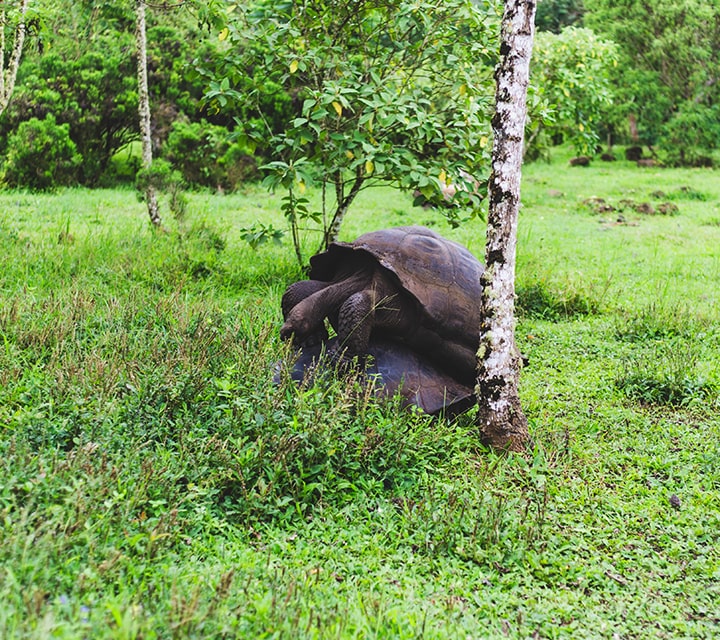
Hatching and Growing Up
Tortoise eggs are left buried in sandy ground for months before they hatch into adorable little replicas of their parents—except much smaller. From there on out begins an uphill battle towards adulthood against various odds such as predators and habitat challenges.
This arduous climb to maturity takes patience (something these creatures have plenty of) with many not reaching full size until they're already several decades old. And even then, growth doesn’t stop entirely but continues at an extremely slow rate throughout their lives—talk about taking your sweet time.
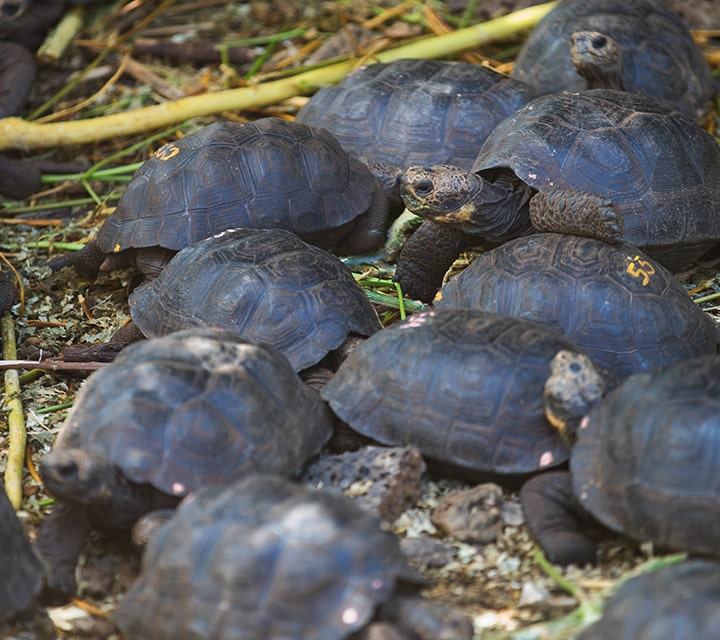
Threats and Conservation Efforts for Galapagos Giant Tortoises
The population of the Galapagos tortoises has significantly decreased over time. Only about 15,000 remain in the wild today; a sharp decline from an estimated quarter-million in yesteryears. This is mainly due to threats posed by non-native species introduced on their islands.
The Impact of Non-Native Species
Species like feral pigs and rats have caused havoc in the habitats of these gentle giants. They not only compete with tortoises for food but also prey on their eggs and hatchlings.
To combat this crisis, various conservation efforts are underway by dedicated organizations such as the Galapagos Conservation Trust. These groups focus primarily on eradicating invasive species while nurturing endangered ones back to a stable state through captive breeding programs.
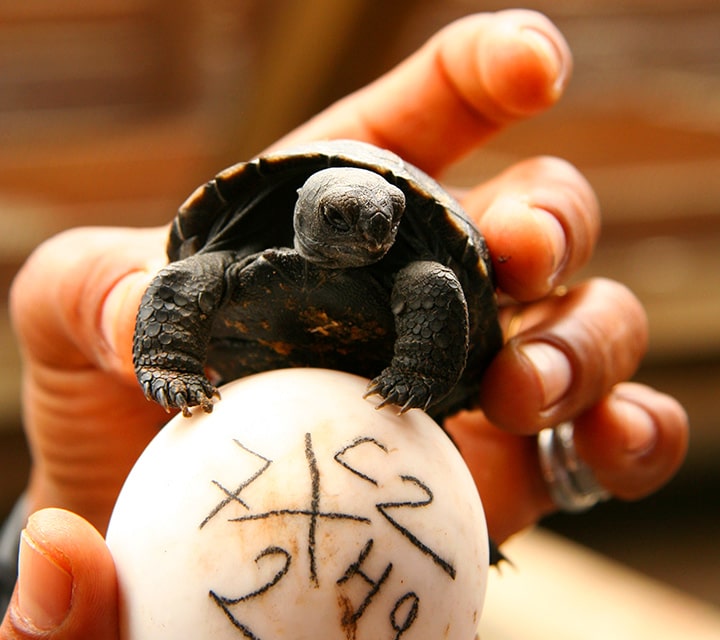
Interestingly enough, many subspecies are now listed as critically endangered or simply “endangered.” But fear not. The Ecuadorian government has stepped up its game too.
Ecuador enacted laws that prohibit hunting these creatures and developed protected areas within Galapagos National Park where most giant tortoises reside. Through consistent effort and determination from all sides involved—local communities included—there’s still hope yet for our ancient wanderers.
The Incredible Longevity of Galapagos Giant Tortoises
When it comes to the animal kingdom, few creatures outlive the Galapagos tortoise. With an average lifespan stretching beyond a century, these giant wanderers hold secrets to incredible longevity. Let's investigate what contributes to their endurance.
The Tale of Lonesome George
Perhaps no story better illustrates the astounding lifespans of these Galapagos giants than that of Lonesome George. As a Pinta Island tortoise, he lived over 100 years before his death in 2012. But there's more to this tale.
Lonesome George was not just any tortoise—he was considered the last living individual from the Pinta Island subspecies. His long life and eventual passing highlighted both their extraordinary longevity and critical conservation issues facing these unique reptiles today.
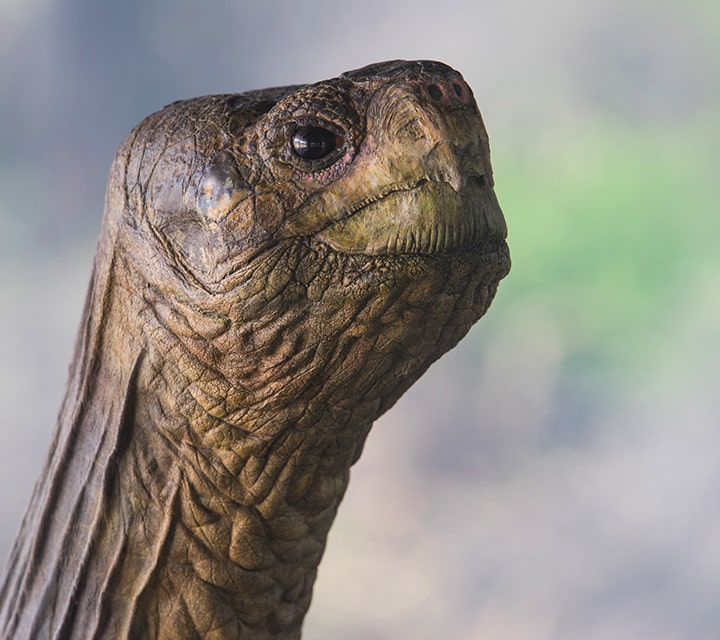
Beyond being symbols for endurance, why do Galapagos tortoises live so long? Partly because they have evolved slow metabolisms—think less hare, more... well...tortoise. This slower pace reduces wear and tear on their bodies over time—a nifty trick we humans could certainly learn from.
Aging Gracefully: The Slow Life Does Wonders
Slow metabolism is only part of the puzzle though. It seems size matters too when it comes to age. You see, with some specimens reaching up to five feet in length and weighing over 500 pounds, the largest known land vertebrates are also among its longest-lived.
Another intriguing fact is that, unlike humans, these tortoises don't show typical signs of aging. They continue to grow and reproduce well into their old age—yet another trait we might envy. This fascinating feature has caught the attention of scientists worldwide hoping it could hold keys to understanding human longevity.
The Galapagos tortoise truly embodies longevity. It's fascinating to consider how much of history these creatures have witnessed in their lifetime.
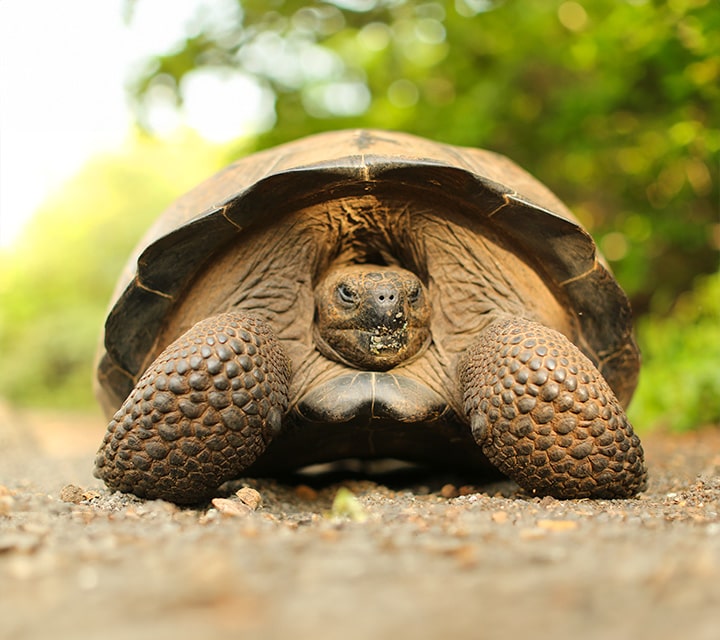
Key Takeaway
Galapagos giant tortoises are truly ancient wanderers, living well over a century thanks to their slow metabolisms and large sizes. Their remarkable longevity is not only fascinating but it also holds potential insights into human aging. However, they're more than just symbols of endurance. These unique reptiles need our help as they face critical conservation issues.
Conclusion
So, what have we learned in Galapagos Giant Tortoises: 6 Fascinating Facts of These Ancient Wanderers? We've discovered their incredible journey from the mainland of South America to the Galapagos Islands and how Charles Darwin helped unveil their mystery.
We dove into unique physical attributes, like diverse shell types that aid survival in various habitats. Life cycles were explored with a focus on mating rituals and nest temperature's role in determining sex.
We faced the harsh reality of threats looming over these tortoises—from dwindling numbers due to non-native species introductions to ongoing conservation efforts aimed at protecting them.
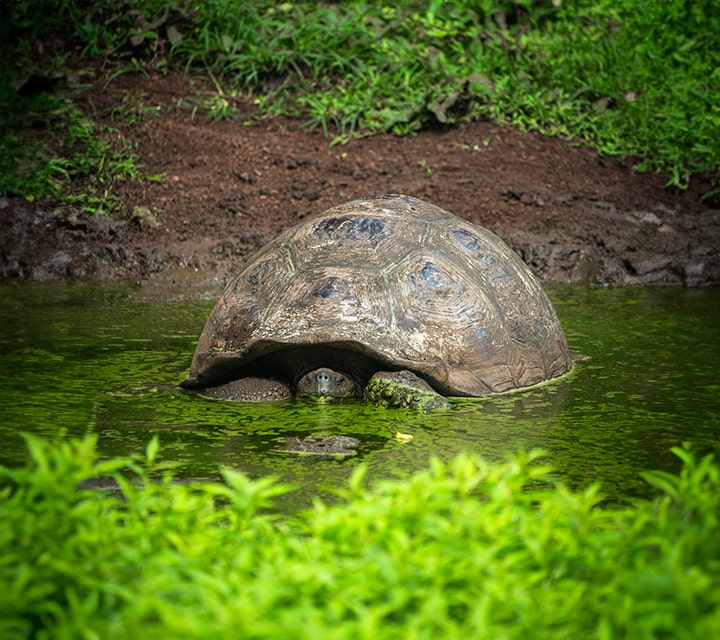
Finally, we delved into their impressive longevity, including how they can live for over a century while ending with Lonesome George's poignant tale that marked the end of an era for Pinta Island tortoise species.
In short, these ancient wanderers' fascinating lives teach us about adaptation, survival against the odds, and the dire need for wildlife conservation.
Galapagos Giant Tortoise: The Facts
Summarizing what we've learned by diving into the world of the Galapagos giant tortoise, let's recap:
- There are only about 15,000 Galapagos tortoises remaining in the world. The last of the Pinta Island subspecies, Lonesome George, died in 2012.
- Galapagos giant tortoises can live up to nearly 200 years old.
- The Galapagos giant tortoise is the world's biggest tortoise species. A full-grown tortoise can be over 5 feet long and weigh as much as 500 pounds or even more.
- The temperature of the nest determines the sex of Galapagos tortoise hatchlings.
- There are 13 living species of Galapagos tortoises today, with their shell sizes and shapes varying between populations and subspecies.
- Galapagos giant tortoises have built-in "floatation devices"—large air chambers within their shells—allowing them to migrate across the vast expanse of the Pacific Ocean.
